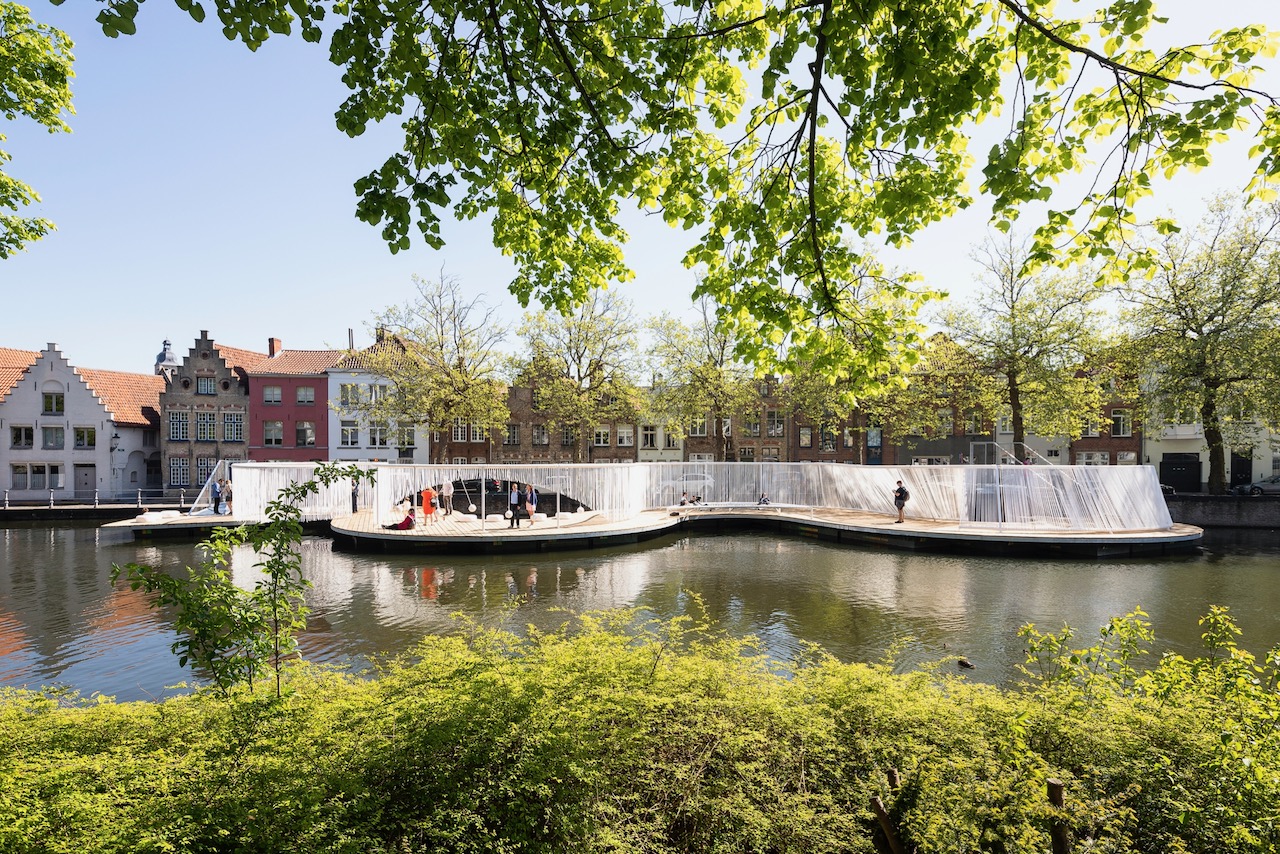This blog follows on from the previous one where we looked at seasonal interventions. In the previous cases the riverside installations are assembled every year. They may be different installations each year as in the skating shelters in Winnipeg or the same installations that are put away at the end of season and brought out again in spring, as in Olive Beach in Moscow or the Paris Plages in Paris. The set of case studies below, however, were of a temporary nature, each one focussing on showcasing a different aspect of water. All these case studies were set up for festivals.
Micro-installations on stairs near Piaskowy bridge in Wrocław
This installation was created for the Lower Silesian Festival of Architecture as part of activities organised in Wrocław for the European Capital of Culture 2016. The concrete stairs that run down to the water were built decades ago to provide a view and connection with the water, however, it was not an inviting place to stay. There were no seats or benches created. Simple seating and sunbathing spaces were created to fit the concrete steps, providing space for people to relax, socialise or sunbathe while enjoying a view of the river. The concept of the simple seating was expanded to other places as well after the festival. This installation highlights how simple changes can be made that improves the way that people can enjoy being close to the river.
“Between the Waters” art installation and community garden
This installation was created for the art festival EMSCHERKUNST in 2010. The aim was to highlight the issue of water quality, which was a particular problem due to the industrial heritage of the area. The installation begins with two toilets, which are symbolically raised over the polluted Emscher river. Water from the river was then added to the septic tanks of the toilets before running down the installation through a series of purification systems: an artificial wetland, a rainwater harvesting roof and into a water storage bag. Each step demonstrating how water can be treated to provide clean water, not just for irrigation but water fit to drink.
Canal installations for the Bruges Triennial Festival
Two installations from the Bruges Triennial Festival have been included in the database, one from 2015 and one from 2018. The first, the Canal Swimmer’s Club consisted of a wooden deck that led to a floating lounge and sun shelter. Access was provided from the embankment via a ramp from both ends. The installation yields numerous recreational opportunities, both by the water and in the water. People could relax, visit the events and swim as well as get a different perspective of the Bruges’ canals. The installation also drew attention to the improved water quality and the fact the canals are now swimmable. In addition, this temporary intervention highlighted the missed opportunity for a direct connection to the water in a city renowned for its canals.
The second installation, The Floating Island was a wave-formed platform, which floated just above the water level, bringing people close to the water. Ropes, hammocks and a net stretched over the water created a playful atmosphere enhancing the interaction with water in a space where a permanent installation was not possible.
Live Experiments
Temporary installations provides an opportunity to experiment at a lower cost than with a permanent installation. It also allows an assessment of the potential impacts of a permanent facility and can serve as a place for discussions on what a permanent feature might look like or the role it might serve. As we are finding out during these times of Covid, open spaces have much to offer our modern populations. Expanding the use of these blue spaces has a great potential to provide increased health and well-being through increased activities and space to rest and contemplate in the open air. The simple seating in Wroclaw showed how low cost comfortable seating can be added to a space to expand the amenity of that place in an acceptable socially distanced way, a necessity for these days. The art installation by the Emscher river showed the benefits of wetlands to provide clean water, important for health and hygiene. The installations for the festivals in Brugges extended the use of the canals, demonstrating the missed opportunities of play in the improved waters. Not all installations need to be permanent or expensive, but improved access to water is a benefit to be explored.

